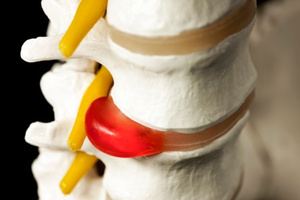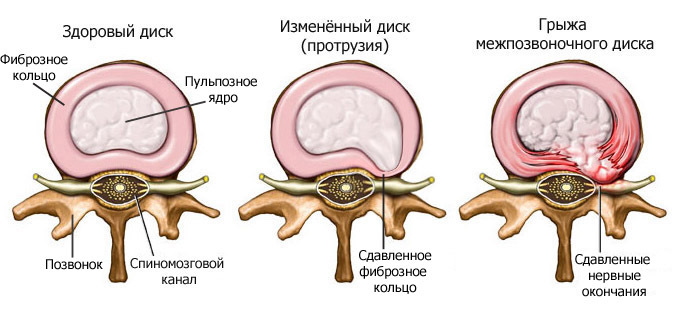 Back pain, which is often caused by a herniated intervertebral disc, is a problem with which 5 people out of 1000 face worldwide every year. Only 60% to 80% of the cases of radicular pain are successfully treated with by the therapeutic methods of .The remaining patients resort to surgical treatment of .
Back pain, which is often caused by a herniated intervertebral disc, is a problem with which 5 people out of 1000 face worldwide every year. Only 60% to 80% of the cases of radicular pain are successfully treated with by the therapeutic methods of .The remaining patients resort to surgical treatment of .
Due to the significant number of cases of this disease and the long recovery period inherent in classical open intervertebral disc surgery, there is a constant search for less invasive ( with the least interference in human tissue) therapies.
Percutaneous laser vaporisation of the intervertebral disc ( CHLVD) is one of the so-called "minimally invasive" therapies. The idea of using laser treatment for hernia of the spine arose in the early 80-ies of the twentieth century.
The principle of CMD is based on a concept that treats the intervertebral disc as a "closed hydraulic system", which consists of a gelatinous core - containing a large amount of water of a loose substance, surrounded by a fibrous ring( dense shell).Increasing the water content in the gelatinous core leads to a disproportionate increase in the pressure inside the disc, which causes the content to "squeeze out".The radicular pain that accompanies disc hernias is the result of compression of the nerve roots.
Reducing the internal disk pressure causes the hernial contents to retreat toward the center of the disc, which leads to reduced nerve compression and pain relief. This mechanism underlies the vaporization, in which the water from the gelatinous nucleus is evaporated by means of the of the fiber laser, which, under local anesthesia, is inserted through a thin needle into the intervertebral disc.
Actually, the procedure can be done "blindly"( under visual control of what is happening inside the disk through the endoscope), but as a rule the correct position is checked by fluoroscopy in two planes, sometimes by computer tomography or, more rarely, by magnetic resonance imaging.
In addition to evaporation of water, an increase in temperature leads to a change in the structure of the pulpous core, limiting its ability to attract water and, therefore, prevents an increase in internal disk pressure.

Laser treatment stages of hernia disc
When can be used?
FMDD can be performed when the patient has an radiographically confirmed herniated disc, as well as the presence of the corresponding radicular symptoms.
Contraindications to the treatment of spinal hernia with
laser Since the principle of CMD is based on the concept of a "closed hydraulic system", this method of treatment does not apply to hernias with integrity of the fibrous ring( the presence of disk extrusion - loss of contents of the pulpous nucleus beyond the fibrous ring or sequestered hernia - thatthe same option, in which the pieces of the fallen nucleus are separated into the spinal canal).
Another contraindication may be a narrowing of the intervertebral disc or abnormalities in the structure of the vertebrae, which make surgical access to the disc difficult.
 About the nuances of the treatment of a hernia of the lumbar spine can be found in this article of the section on Hernias.
About the nuances of the treatment of a hernia of the lumbar spine can be found in this article of the section on Hernias. On analogues of the popular remedy for pains Fastum gel find out here.
The effectiveness and benefits of laser vaporization of the
disk According to the research, the success of the operation varies from 75% to 87% .In 4.4% -25% of cases, is deficient treatment effect( pain remains) or recurrent hernia, which sometimes leads to the need for additional surgical treatment.
most significant and frequently described complication is Spondylodiscitis( inflammation of intervertebral disc tissue, and( or) a vertebra) aseptic and septic( microbial) whose frequency varies from 0 - 1.2%.
Potential medical and economic benefits from the use of percutaneous laser vaporization of the intervertebral disc are high enough. The procedure is carried out through a tiny hole in the skin, so surgical trauma is reduced, and the recovery period lasts less.
Due to the minimization of surgery vocational rehabilitation is usually possible within few days after treatment( of course, with certain restrictions in physical activity), which makes CHLVD viable alternative to conventional surgery.
We will be glad to leave feedback and successful experience of laser therapy of hernia of the spine.



